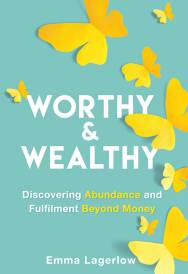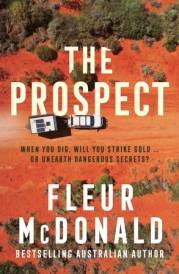Wolf Man
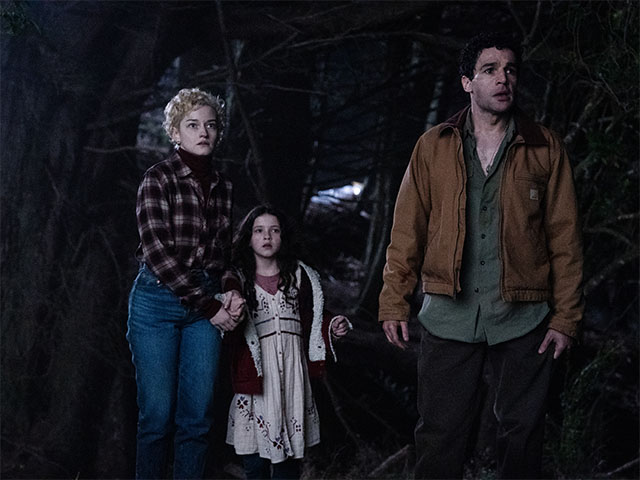
Cast: Christopher Abbott, Julia Garner and Sam Jaeger, Matilda Firth, Benedict Hardie, Ben Prendergast, Zac Chandler, Beatriz Romilly, Milo Cawthorne
Written by: Leigh Whannell & Corbett Tuck
Directed by: Leigh Whannell
Producer: Jason Blum p.g.a, Ryan Gosling
Executive Producers: Leigh Whannell, Beatriz Sequeira, Mel Turner, Ken Kao
Genre: Thriller
What if someone you loved became something else?
From Blumhouse and visionary writer-director LEIGH WHANNELL, the creators of the chilling modern monster tale The Invisible Man, comes a terrifying new lupine nightmare: Wolf Man.
Golden Globe nominee CHRISTOPHER ABBOTT (Poor Things, It Comes at Night) stars as Blake, a San Francisco husband and father, who inherits his remote childhood home in rural Oregon after his own father vanishes and is presumed dead. With his marriage to his high-powered wife, Charlotte (Emmy winner JULIA GARNER; Ozark, Inventing Anna), fraying, Blake persuades Charlotte to take a break from the city and visit the property with their young daughter, Ginger (MATLIDA FIRTH; Hullraisers, Coma).
But as the family approaches the farmhouse in the dead of night, they're attacked by an unseen animal and, in a desperate escape, barricade themselves inside the home as the creature prowls the perimeter. As the night stretches on, however, Blake begins to behave strangely, transforming into something unrecognizable, and Charlotte will be forced to decide whether the terror within their house is more lethal than the danger without.
The film co-stars SAM JAEGER (The Handmaid's Tale), BEN PRENDERGAST (The Sojourn Audio Drama) and BENEDICT HARDIE (The Invisible Man), with newcomer ZAC CHANDLER and MILO CAWTHORNE (Shortland Street).
Wolf Man is directed by LEIGH WHANNELL and written by LEIGH WHANNELL & CORBETT TUCK. Whannell's previous films with Blumhouse include The Invisible Man, Upgrade and Insidious: Chapter 3.
The film is produced by Blumhouse founder and CEO JASON BLUM p.g.a., and is executive produced by LEIGH WHANNELL, BEATRIZ SEQUEIRA and MEL TURNER. Universal Pictures and Blumhouse present a Cloak & Co. production: Wolf Man.
The director of photography is Whannell's acclaimed longtime cinematographer STEFAN DUSCIO (The Invisible Man, Upgrade) and the production designer is RUBY MATHERS (The Dry, Top Boy). The film is edited by another longtime Whannell collaborator, ANDY CANNY ace (The Invisible Man, Upgrade), and the film's costume designer is SARAH VOON (Evil Dead Rise, Evil Dead). The music is by Grammy, Emmy and Golden Globe nominated composer BENJAMIN WALLFISCH, whose acclaimed musical scores include those for Twisters, Blade Runner 2049, The Invisible Man, It and Hidden Figures. The music supervisors are DEVOE YATES (Halloween franchise, Ocean's Eight) and Emmy winner GABE HILFER (The White Lotus, Steve McQueen's Blitz). The casting is by TERRI TAYLOR csa (M3GAN, Five Nights at Freddy's), SARAH DOMEIER LINDO csa (M3GAN, Five Nights at Freddy's) and ALLY CONOVER csa (Speak No Evil, Insidious: The Red Door).
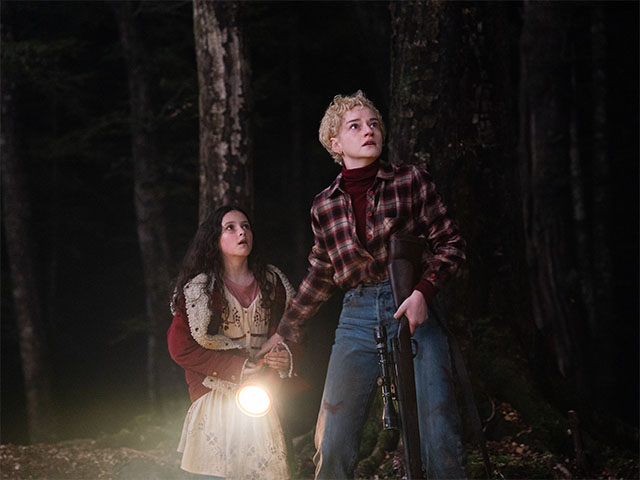 THE BACKSTORY
THE BACKSTORY
Perhaps no filmmaker has been more daring and visionary in reimagining a Universal classic monster character than writer-director Leigh Whannell, whose 2020 Blumhouse hit The Invisible Man, starring Elisabeth Moss, transformed the 19th century H.G. Wells novel and 20th century horror movie into a terrifying 21st century allegory for gaslighting and domestic abuse. And no filmmaker, it's fair to say, was better equipped to reinvent the hairiest of potential monster-movie adaptations: the Wolf Man.
"What Leigh Whannell was able to accomplish with The Invisible Man was astonishing," producer Jason Blum says. "He took an intimate moment about a heroine struggling to get away from abuse and expanded her horror into a terrifying journey for the audience. When Universal asked us what Blumhouse's take would be on Wolf Man, I knew that Leigh should be the captain. His unparalleled ability at extracting terror from relatable moments allows him to show horror that is not fantastical, but tactile and immediate."
Ancient tales of werewolves, or wolf men, date far back almost as old as humanity itself, rising out of ancient lore, recorded as early as 2100 BC. The tales of lycanthropy" the transformation of a man into a wolf"became so ingrained in European folklore that they inspired werewolf trials in Europe in the 16th and 17th centuries, dying out around the same time that America's famed Salem witch trials began. Werewolves would later appear in Bram Stoker's 1897 novel Dracula and his short story, Dracula's Guest.
The wolf man made his first film appearance in 1935, with Werewolf of London, and then became immortalized in pop culture beginning with the 1941 Universal classic starring Lon Chaney, Jr. The Wolf Man. In the decades since, the character has prowled through almost every decade and film genre, morphing from malevolent terror (1981's The Howling) to body horror (1981's An American Werewolf in London) to middlebrow comedy (1985's Teen Wolf), and from romantic hero (1994's Wolf starring Jack Nicholson) to tortured tween sex symbol (2008's Twilight and subsequent franchise).
"These classic monsters have endured for a reason," Whannell says. "They are as iconic and as famous as Michael Jordan, Marilyn Monroe, Charlie Chaplin, Winston Churchill, all these faces throughout history. The Mummy, Dracula, The Invisible Man and The Wolf Man are on the Mount Rushmore of pop culture. Something about them is just too fascinating, creepy and mysterious to go away."
But when Blumhouse first approached Whannell about reimagining the Wolf Man for a new generation, he was intrigued but unsure he wanted to take this particular journey. "My first answer was, 'No. I just did The Invisible Man. I don't want to follow that up with Wolf Man,'" Whannell says. "But then I thought of an angle that I could take it in. I had to walk around the block and find my way into it. In the past, the character of the werewolf has been wrapped around this big transformation, like the famous scene from An American Werewolf in London. That Wolf Man was superbly designed by Rick Baker and is the watermark for practical effects. It's impossible to top what he did. So much so, that I thought that we should not try to improve upon that, but to take it in a completely different direction."
That direction anchored the film and the characters in a grounded, real world. As Whannell and fellow screenwriter Corbett Tuck developed the script, the story evolved into the tale of Blake Lovell, a husband and father struggling with a turbulent past. The broken product of a survivalist father, Blake thought he had put a cruel childhood to rest. Now raising a daughter in the San Francisco Bay area with journalist Charlotte, the wife from whom he has grown distant, Blake is tortured by long-buried secrets that threaten his chosen family.
When Blake learns that his father has died and bequeathed him the Lovell farm, he and Charlotte decide to take a break from the city hustle and recalibrate in central Oregon. The night they arrive, however, they stumble upon a diseased creature"neither man nor animal"who threatens to tear apart their tenuous hold on one another.
As the night progresses, Blake begins to transform into something unrecognizable. But unlike in every previous incarnation of the Wolf Man, Whannell decided that we, the audience, would change with him. "I started thinking about seeing the Wolf Man changing from the Wolf Man's perspective," Whannell says. "A lot of the wolf man history has been about this curse, and that a full moon can bring it out in you. I wanted to do with this character what David Cronenberg did with The Fly. He drilled down to the essence of a previous film that could be considered quite comical. Same with John Carpenter's The Thing. These movies take their monsters seriously and have no room for winking or poking fun."
By allowing the audience to experience Blake's transformation both from Blake's perspective and the perspective of his wife and daughter, the film, Whannell realized, could have husband and wife within two separate spaces, with only the audience simultaneously seeing both sides. "One would live in the human world, and one in the animal one," Whannell says. "Once I saw this couple as no longer having the ability to communicate, this was my tipping point. Blake would be listening to his wife speak and literally not understand what she was saying. I loved the idea of mixing dialogue from one of the characters in a way where you couldn't understand the other."
As always, Whannell's goal is to understand the root emotional truths of the characters he is creating, and then to build the horror on the foundation of those truths. The terror becomes real to the audience because although we have not encountered an actual invisible man or a wolf man in our lives, we recognize the man within the monster. "You make the movie when you write it," Whannell says. "Shooting is all interpretive art. I listened to a lot of music when I was writing, finding an emotional way into the story. I asked myself, 'What gives me goosebumps? What makes me cry?' Through those feelings, you find the movie. My approach is to strip out the window dressing and to find the core of what's scary about these characters. If you do it right with a horror film, you can dig deep into someone's subconscious."
To do it right, though, Whannell needed a cast that could deliver that emotional truth. He found them in Christopher Abbott, Julia Garner and Matilda Firth. "This is a situation that is very heightened," Whannell says. "You're using prosthetic makeup. Many elements could be ludicrous if we didn't handle them with care. Every time I would watch Christopher, Julia and Matilda in the scenes, they brought so much of themselves. That is what you have to do in these moments of humanity. You have to breathe life into these words."
Wolf Man is in cinemas now
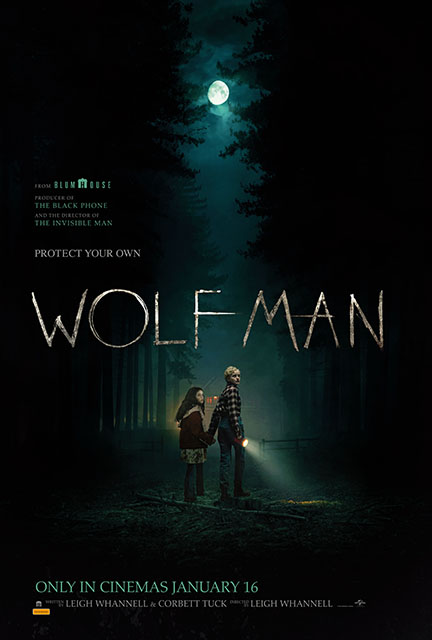
MORE

